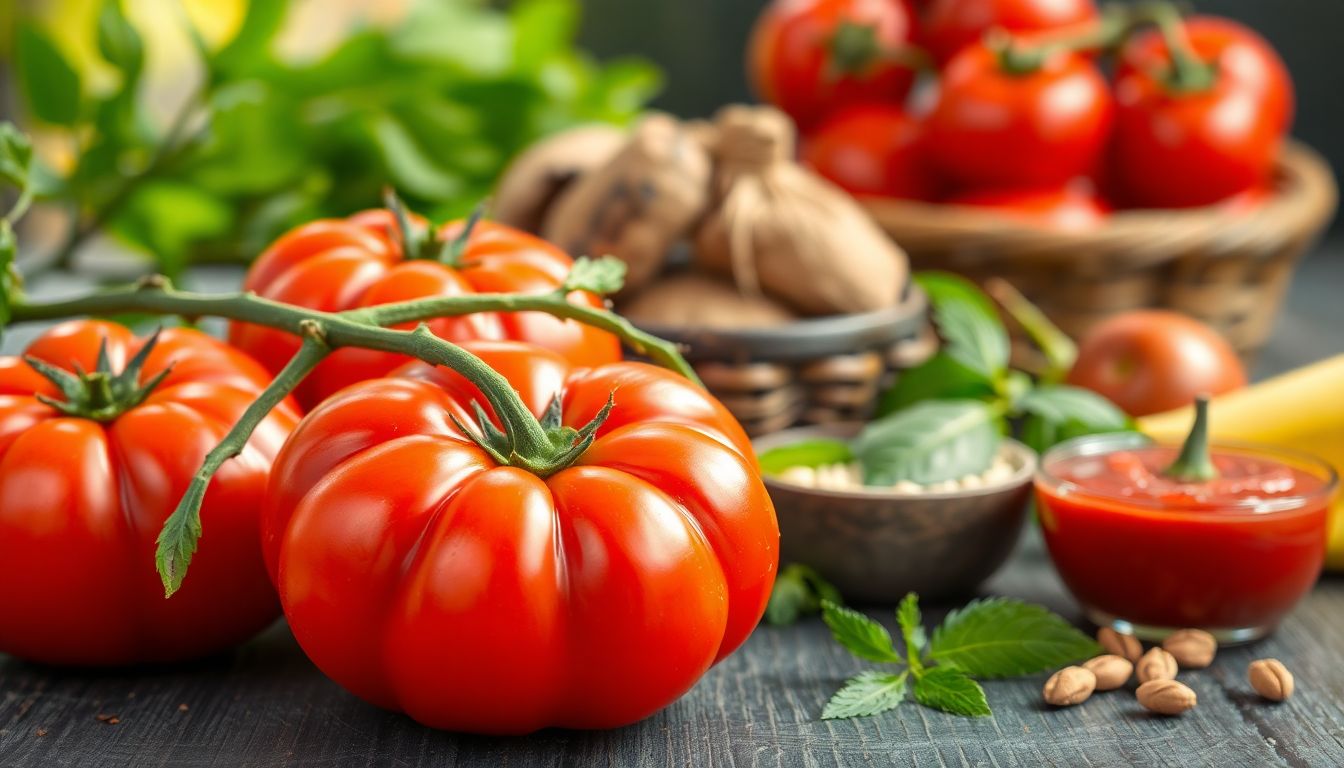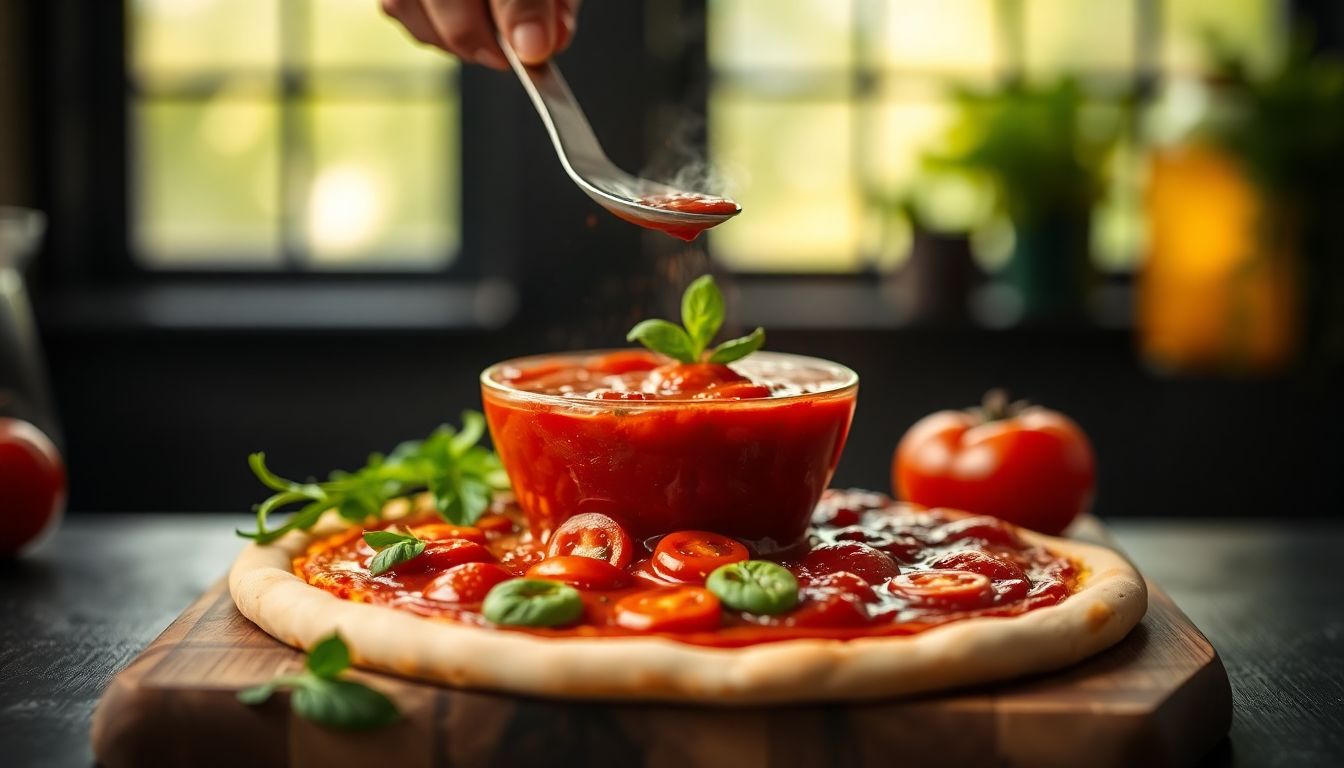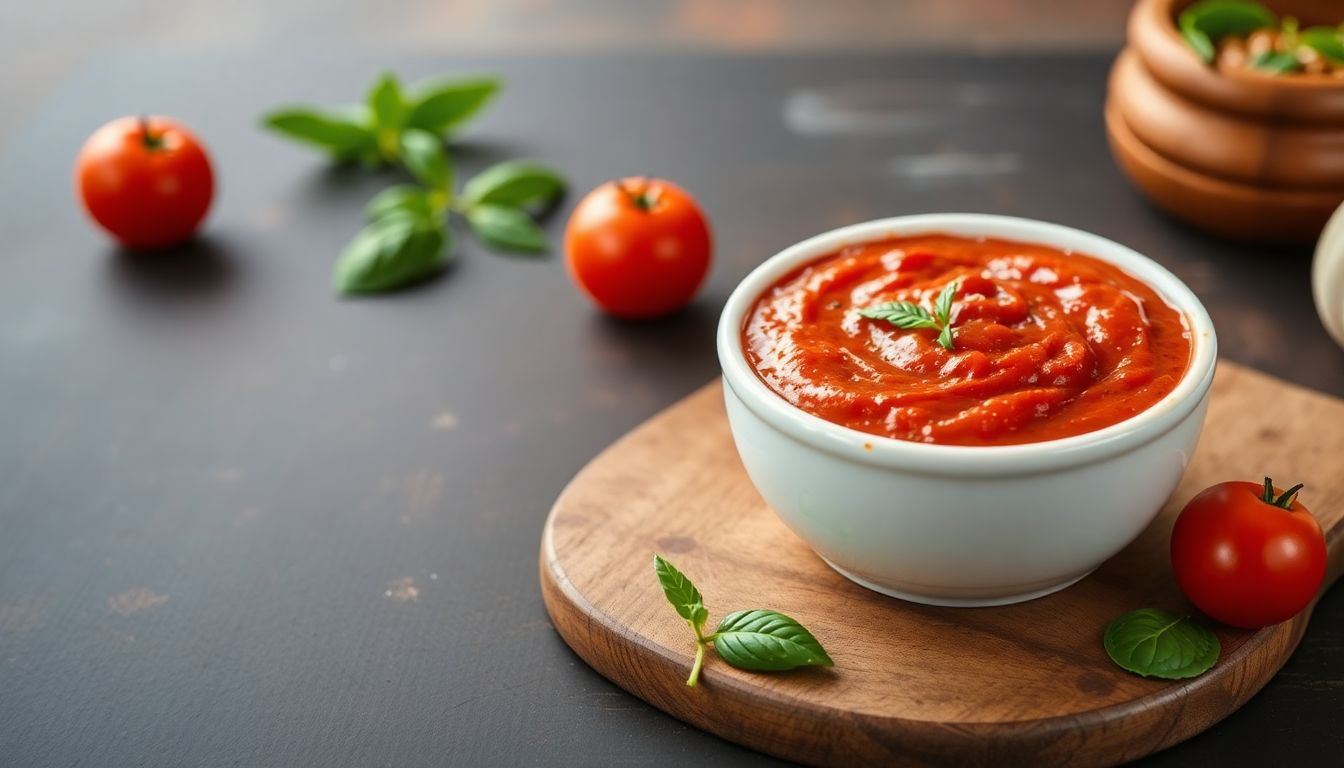The magic of an authentic Italian pizza sauce lies not just in the simplicity of its ingredients but in the passion and tradition it carries. As someone who revels in culinary adventures, I can confidently say that a genuine Italian pizza sauce transcends mere taste; it’s a journey through time, rooted in generations of meticulous craftsmanship and sun-kissed tomato fields of Italy. The essence of Italy is encapsulated in this sauce, and if you’ve ever had a pizza that made your taste buds dance, chances are, it had a sauce akin to this one.
Authentic Italian Pizza Sauce Insights
Discover how to create a delicious and authentic Italian pizza sauce with this straightforward recipe.
– Learn why using fresh ingredients and a blend of herbs enhances the flavor of your pizza sauce.
– Get a comprehensive list of essential ingredients needed for the perfect sauce, including tomatoes, garlic, and basil.
– Follow step-by-step instructions and expert tips to ensure your sauce turns out rich and flavorful every time.
Why This Recipe Works
The cornerstone of any remarkable pizza is its sauce. You might be tempted to grab a jar off the shelf, but let me tell you why making your own is a revolution. This recipe works because it honors the traditional Italian approach, focusing on the freshest ingredients and a minimalistic method that lets each component shine. The tomatoes are the star, and by using fresh, ripe tomatoes, you capture that quintessential tang and sweetness that balance beautifully on a pizza.
What makes this recipe truly authentic is the simplicity. In a world where food has become overly complicated, returning to basics is refreshing. Each ingredient plays a crucial role, from the robust punch of garlic to the silky finish of olive oil. There’s no sugar to mask flavors, no preservatives to alter the natural taste—just pure, unadulterated ingredients working in harmony.
Insider Tip: According to Chef Luca Manfè, a MasterChef winner from Italy, “The secret to a good pizza sauce is not to overcook the tomatoes. You want to preserve that fresh flavor, which is why a quick simmer is all you need.”

Ingredients
Creating an authentic Italian pizza sauce isn’t about a long list of ingredients but selecting the right ones. Here’s what you need:
- 2 pounds of fresh, ripe tomatoes (preferably San Marzano)
- 3 cloves of garlic, minced
- 1/4 cup extra virgin olive oil
- 1 teaspoon sea salt
- 1 teaspoon freshly ground black pepper
- A handful of fresh basil leaves
- A pinch of red pepper flakes (optional)
- 1 tablespoon of tomato paste (only if needed for thickness)
Each ingredient is chosen for its ability to enhance without overpowering. The San Marzano tomatoes are revered for their low acidity and natural sweetness, making them ideal for a balanced sauce. Fresh basil adds a fragrant touch that dried herbs simply can’t replicate. And while the red pepper flakes are optional, they provide a hint of heat that can elevate the sauce to new heights.
Insider Tip: If San Marzano tomatoes aren’t available, opt for the ripest, vine-ripened tomatoes you can find, as they’re integral to achieving that authentic flavor.
Instructions
Creating this sauce is as much about technique as it is about ingredients. Follow these steps to craft a sauce that will transport your pizza from good to exceptional:
- Prepare the Tomatoes: Begin by blanching the tomatoes. Score the bottoms with a small ‘X’, then plunge them into boiling water for about a minute. Transfer immediately to an ice bath to halt cooking, making the skins easy to peel. Once peeled, chop them roughly.
- Sauté the Garlic: In a heavy-bottomed pan, heat olive oil over medium heat. Add the minced garlic, sautéing until fragrant but not browned—about a minute.
- Simmer the Sauce: Add the chopped tomatoes to the garlic and oil, seasoning with salt and pepper. Simmer for about 20 minutes, stirring occasionally. If the sauce seems too thin, add the tomato paste to thicken.
- Finish with Basil: In the final minutes of cooking, tear the basil leaves by hand and stir into the sauce. Remove from heat and let the flavors meld.
- Blend (Optional): If you prefer a smoother sauce, use an immersion blender to puree it to your desired consistency.
This method highlights the tomatoes’ natural sweetness and the aromatic depth of garlic and basil. The sauce should be vibrant and fresh, embodying the spirit of a true Italian kitchen.

Tips for Success
Crafting the perfect pizza sauce is an art, and like any art form, there are nuances that can elevate your creation:
- Choose Quality Ingredients: The quality of your tomatoes and olive oil is paramount. Opt for organic and cold-pressed options where possible.
- Don’t Rush the Process: Allow the sauce to simmer gently. Rushing will only result in a loss of flavor depth.
- Adjust to Taste: Italian cooking is about feeling. Taste as you go and adjust salt, pepper, and basil according to your preference.
- Store Properly: If you make a large batch, store the sauce in airtight containers. It can be refrigerated for up to a week or frozen for up to three months.
- Experiment with Herbs: While basil is traditional, adding a hint of oregano or thyme can add complexity to your sauce.
Insider Tip: Chef Giovanni Rana recommends always adding fresh basil at the end of cooking to preserve its delicate flavor and vibrant color.
Nutrition Information
While authenticity and flavor are key, nutritional awareness is a welcome companion. Here’s a breakdown of what you’re consuming with this sauce:
- Calories: Approximately 70 per serving
- Carbohydrates: 5g
- Protein: 1g
- Fat: 5g
- Sodium: 200mg
- Fiber: 2g
- Vitamin C: 25% of recommended daily intake
The sauce is naturally low in calories and high in vitamins, making it a healthful addition to any meal. The use of olive oil provides healthy fats, and the fresh tomatoes are a powerhouse of antioxidants, notably lycopene, which is great for heart health.

A Taste of Tradition: My First Italian Pizza Sauce Experience
Growing up in a small town, I always craved authentic flavors, but it wasn’t until my trip to Naples that I truly understood what real Italian pizza sauce could be. It was a warm afternoon in June when I wandered into a quaint pizzeria, the aroma of fresh tomatoes and basil wafting through the air.
As I sat down, I noticed an elderly man named Giovanni, who was the chef and owner. He was known for his traditional pizza-making techniques. I couldn’t resist striking up a conversation with him about his sauce. Giovanni shared his secrets, emphasizing the importance of using San Marzano tomatoes, fresh basil, and a touch of extra virgin olive oil. He explained that the simplicity of the ingredients was paramount; each component had to be of the highest quality to create the perfect balance of flavors.
That evening, I watched in awe as he prepared his sauce, hand-crushing the tomatoes and adding a pinch of salt while allowing the flavors to meld. It was an art form, and I was captivated. I took my first bite of the pizza, and the sauce was vibrant and fresh—nothing like the jarred varieties I had known. It was that experience that inspired me to recreate his sauce back home.
Now, every time I make pizza, I remember Giovanni’s teachings. I use the same quality ingredients and the technique he showed me. The taste transports me back to that little pizzeria in Naples, reminding me that sometimes, the simplest recipes carry the deepest connections to culture and tradition.
Reviews
Here’s what some home cooks have to say about this authentic Italian pizza sauce recipe:
- Maria L. from New York: “This sauce reminded me of my grandmother’s kitchen in Naples. Simple, fresh, and full of flavor. It’s a game-changer!”
- James T. from Chicago: “I’ve tried countless recipes, but this one is the real deal. The fresh tomatoes make all the difference. I’ll never go back to store-bought!”
- Elena M. from San Francisco: “I was skeptical at first, but the simplicity won me over. It’s perfect for our family pizza nights, and the kids love it!”
These reviews reflect a universal truth: when you respect the integrity of your ingredients and the tradition behind them, the results are always extraordinary.

Conclusion
In a world of fast food and instant gratification, making an authentic Italian pizza sauce might seem like an old-world luxury. However, it’s precisely this kind of culinary mindfulness that enriches our lives and connects us to our roots. By embracing the simplicity and authenticity of this recipe, you’re not just making a sauce; you’re keeping a time-honored tradition alive. The next time you indulge in a slice of pizza topped with this sauce, savor each bite and remember that you’re part of a story that began long before you and will continue long after.